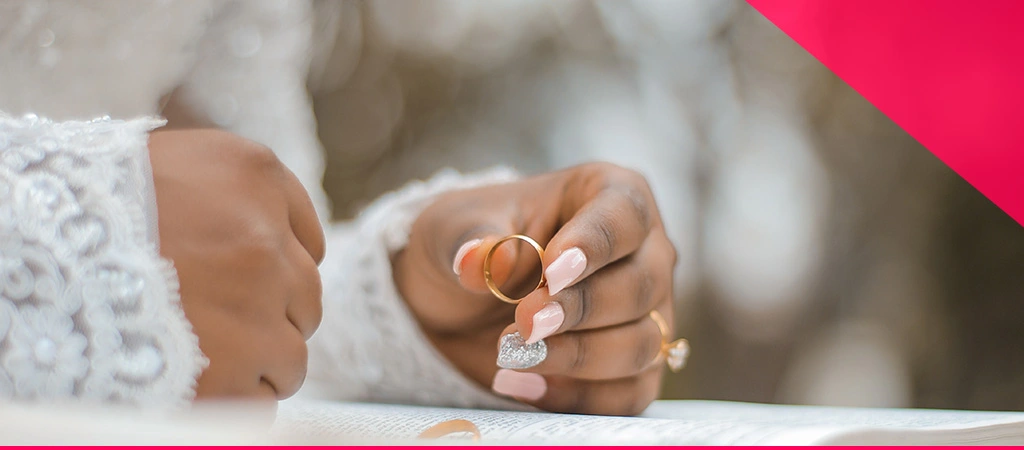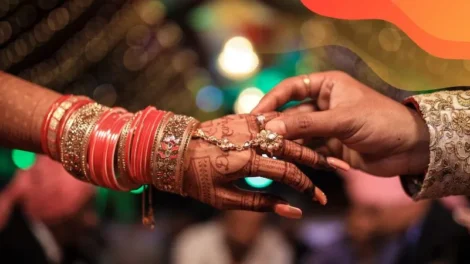Conventional wisdom holds that women eagerly await proposals and seek everlasting commitments. As society’s standards alter and gender roles soften, this assumption should be examined. Is it usually the woman who pushes for a marriage? A common misconceptions is that women push for marriage. In fact, the desire to get married can come from either partner, no matter what gender they are. The decision to marry is very personal and depends on situation and preferences. Is this stereotype just old expectations? This essay will examine the complicated dynamics of marriage proposals and the elements that determine who leads the pursuit of marital bliss.

Understanding gender roles in relationships
Gender roles in relationships have long fascinated and divided people. While it’s assumed that women push for marriage, gender dynamics in partnerships vary between each couple. Traditional stereotypes are changing as men and women embrace their own commitment or avoid it.0
Moving past the idea that women push for marriage is crucial. Men can also want a lifetime partner. Breaking from conventional norms lets us recognize that gender identification does not affect relationship needs.
Understanding gender roles in partnerships demands openness and empathy from partners.
Table of Contents
Historical context: Women’s role in marriage
Women have traditionally been passive participants in marriage, waiting for suitors to court and propose. It is a frequent misperception that women push for marriage. Women were expected to marry young in numerous communities throughout history. Moreover, selecting a compatible companion typically determines their economic and social status.
In some cases, women’s roles in marriage were affected by family or society. Young women in the Victorian era were encouraged to prioritize marriage over personal interests. Marriage was their crowning achievement and proof of their value. Society valued marriage and measured a woman’s success by her ability to find a wealthy spouse.
Arranged weddings in different cultures are another significant part of the historical context. Women typically lack autonomy in choosing their partners; therefore, it may not be realistic to infer they are pushing for these relationships. Instead, family pressures or strategic ties may influence these marriages.
Historical context requires breaking misconceptions about women pressing for marriage. It shows how cultural expectations have limited individual options and perpetuated gender disparity in marriage dynamics throughout history.
Modern trends: Changing dynamics in relationships
Marriage was once the ultimate aim for women, but men were considered slow to commit. Traditional dynamics are being challenged by emerging trends. Women are no longer the sole marriage promoters. Men are increasingly advocating for everlasting commitment.
This change in relationship dynamics is due to changing gender roles and social expectations. Men can now express their desire for emotional connection and long-term partnerships without peer pressure. Recent years have seen less pressure on women to marry. With greater options outside marriage, many women are focused on personal growth and job gains before marrying.
The evolution of relationships demonstrates that men and women want meaningful relationships and intrinsic happiness from committed partnerships. As society rejects gender stereotypes, we may expect even greater changes in how relationships are approached and managed—a trend toward actual equality and mutual understanding between partners rather than expected roles based on society.
Societal pressure on women to marry
Contrary to popular belief, women don’t always push for marriage. Even though society pressures women to marry, men often feel the same pressure. Avoid generalizations and acknowledge that social standards affect both genders.
In many traditional civilizations, women are raised to believe that their main role is to marry and have children. However, as more women enter the workforce and pursue higher education, these expectations may shift. Women now seek independence, career success, and personal fulfillment before marrying.
Family, friends, and culture can also pressure men and women to marry. Some people view marriage as a sign of maturity or stability. Human nature craves friendship and family, so it’s normal that both genders may feel pressure to find a lasting mate.
While women often endure more societal pressure to marry due to historical gender norms and expectations, men can also suffer such pressures. Society must challenge these standards and allow people to make marital decisions based on their own values rather than external pressures.
Men’s perspective: Do they also push for marriage?
Contrary to popular belief, women do not always push for marriage. Men can also want to settle down and commit. Modern gender roles and expectations allow males to indicate their willingness to make a lifelong commitment.
Some guys are cautious about marriage, whereas others aggressively pursue it. Many men want a stable and secure future with their partner and the emotional connection and lifetime companionship of marriage. They may want a family or the security of knowing they’ve found their soulmate.
Recently, social perceptions of relationships have changed. Marriage has become a shared goal for men and women. Men also desire companionship and hope to marry someone wonderful.
Finally, it’s important to dispel the idea that only women want marriage. Men want commitment and long-term partnerships too. Recognizing that both genders want marital joy would encourage stronger relationship conversations and open communication between spouses about their marriage goals.
Breaking stereotypes and embracing equality
Is it generally the woman who suggests marriage? This myth has long held that women want to settle down and men are commitment-phobic. However, we must abandon such narrow views and accept gender equality in relationships. Modern men and women have different goals, schedules, and objectives for their next steps.
Challenge these assumptions because they degrade women by making them passive partners in relationships and put unneeded pressure on men to conform to society. Breaking these assumptions allows us to develop relationships based on open communication, shared values, and equal participation rather than preconceived roles.
Equality means acknowledging that everyone deserves equal chances and respect, regardless of gender identity. When we let go of gender-based prejudices, we make room for true friendships and meaningful dialogues that can change our view of each other as humans rather than labels.
In conclusion, overcoming stereotypes and embracing equality is about demolishing negative ideas that limit people’s potential based purely on their gender identities, not merely who leads partnerships. True equality begins with understanding our biases and working to create a society without stereotypes or judgment.
Conclusion– Is it usually the woman who pushes for a marriage?
In conclusion, societal conventions and preconceptions, not numbers or facts, suggest that women push for marriages. Women may express their desire for commitment more openly, but men and women have different motivations and timeframes for settling down. Generalizing a gender based on a few tales or cultural norms is unfair and misleading. Instead, let’s promote healthy communication and mutual understanding in relationships so both sides may voice their desires without feeling coerced or criticized. Together, we can fight these antiquated ideas and establish a culture that values equality and individual agency in love and commitment.








Very interesting details you have observed,
thank you for putting up.